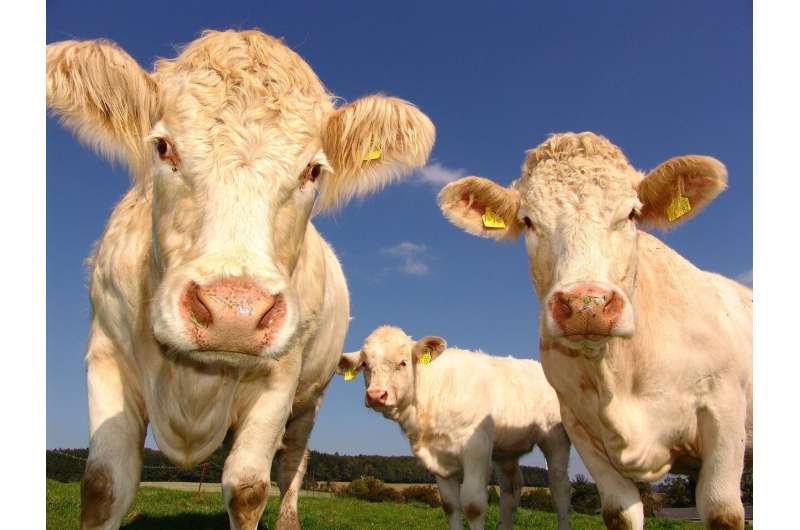What effect does early social contact have on dairy calves’ welfare?

In addition to needs such as food, water, shelter, and medical care, social contact is an important aspect of welfare for animals, just as it is for humans. Yet early socialization of dairy calves is sometimes given lesser priority in the interest of physical health, with young calves housed individually to prevent the spread of contagious diseases such as those that cause diarrhea, or scours, a major source of calf mortality. In a new study appearing in the Journal of Dairy Science, scientists from the University of Florida Department of Animal Sciences investigated whether this individually housed tactic is justified and what unintended consequences it may have.
Given different practical considerations, dairy calves’ age of introduction to social housing varies from farm to farm. Different ages of first socialization may affect behavioral development and responses to later social grouping. In this study, Holstein calves were housed either individually or in pairs during their first two weeks of life and then moved, first to groups of four and later to groups of eight, reflecting the dynamic conditions of many farms’ housing systems. Throughout the study, researchers monitored the calves’ ability to learn to feed independently from the teat bucket in early life, and then from the autofeeder. Calf health, feed intake, and weight gain were recorded, as well as activity and social interactions—with surprising results.
“We anticipated that calves reared with social contact in the first weeks would engage more with novel pen resources, have increased social interaction, and have increased lying time upon social grouping, compared with calves previously individually housed,” said lead investigator Emily Miller-Cushon, Ph.D., University of Florida, Gainesville, FL, USA. However, the scientists found little difference in most of the measured outcomes between the differently socialized groups. The most important difference was consistently greater social resting time among initially pair-housed calves, suggesting greater overall comfort with pen-mates, even upon first introduction.
Miller-Cushon added that the results showed “minimal other effects on behavior and no detrimental effects on performance.” There was even a tendency for fewer days of diarrhea among calves housed in pairs after birth. Thus, the authors observed, “Although concern for calf health is often cited as reason to house calves individually, at least for a short period after birth, we found a tendency for reduced scours in pair-housed calves, providing evidence that social housing does not negatively affect, and may benefit, early-life calf health.”
Proper location of solid feed can improve nutrient intake and growth of dairy calves prior to weaning
E.E. Lindner et al, Effects of early social contact on dairy calf response to initial social grouping and regrouping, Journal of Dairy Science (2021). DOI: 10.3168/jds.2021-20435
Citation:
What effect does early social contact have on dairy calves’ welfare? (2021, August 24)
retrieved 24 August 2021
from https://phys.org/news/2021-08-effect-early-social-contact-dairy.html
This document is subject to copyright. Apart from any fair dealing for the purpose of private study or research, no
part may be reproduced without the written permission. The content is provided for information purposes only.
For all the latest Science News Click Here
For the latest news and updates, follow us on Google News.

